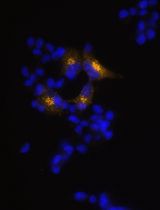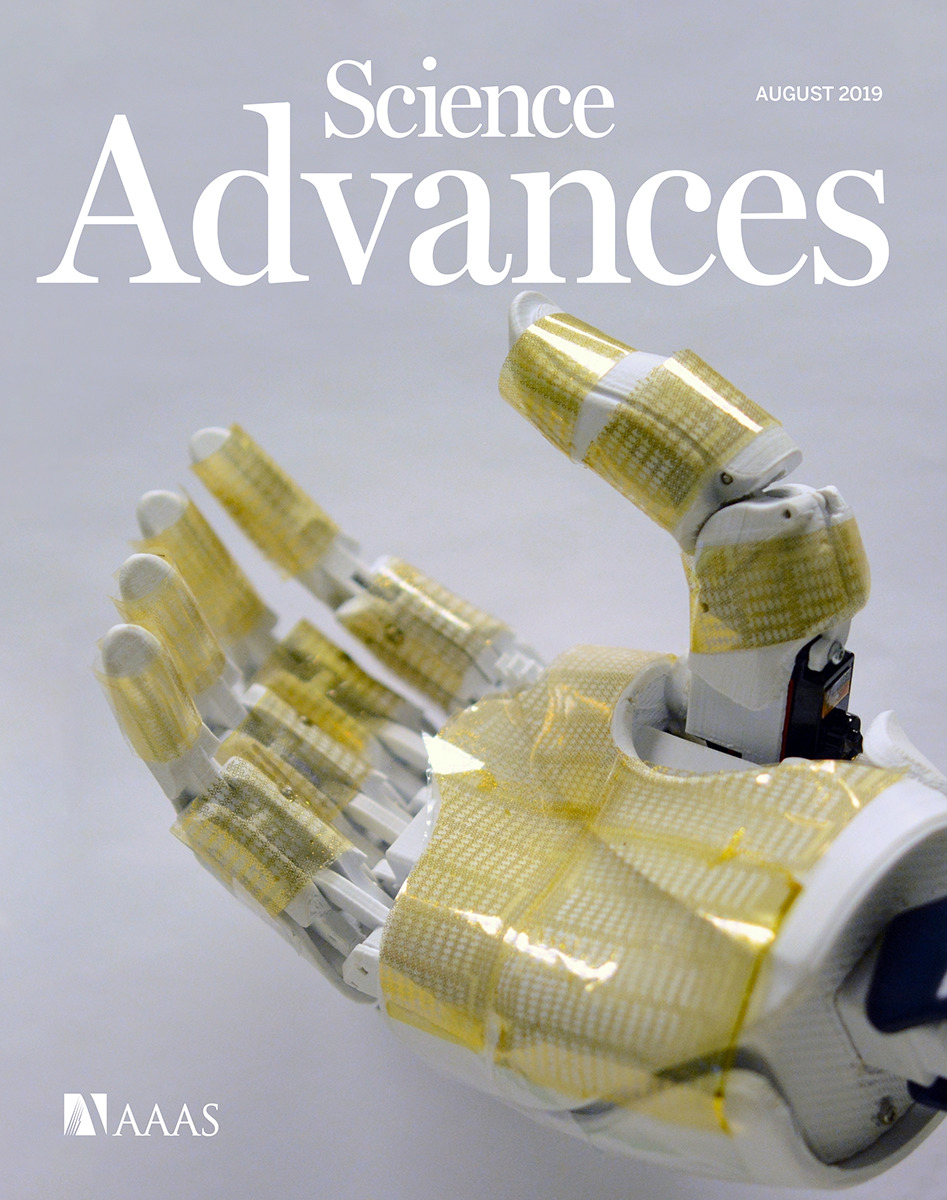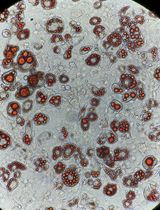- EN - English
- CN - 中文
CRISPR/Cas9-based Engineering of Immunoglobulin Loci in Hybridoma Cells
杂交瘤细胞中基于 CRISPR/Cas9 的免疫球蛋白位点工程
(*contributed equally to this work) 发布: 2023年02月20日第13卷第4期 DOI: 10.21769/BioProtoc.4613 浏览次数: 2968
评审: Luis Alberto Sánchez VargasDay-Yu ChaoAnonymous reviewer(s)

相关实验方案

利用EpiCRISPR系统通过靶向DNA甲基化诱导Alpha TC1-6细胞产生胰岛素
Marija B. Đorđević [...] Melita S. Vidaković
2025年10月20日 1172 阅读
Abstract
Development of the hybridoma technology by Köhler and Milstein (1975) has revolutionized the immunological field by enabling routine use of monoclonal antibodies (mAbs) in research and development efforts, resulting in their successful application in the clinic today. While recombinant good manufacturing practices production technologies are required to produce clinical grade mAbs, academic laboratories and biotechnology companies still rely on the original hybridoma lines to stably and effortlessly produce high antibody yields at a modest price. In our own work, we were confronted with a major issue when using hybridoma-derived mAbs: there was no control over the antibody format that was produced, a flexibility that recombinant production does allow. We set out to remove this hurdle by genetically engineering antibodies directly in the immunoglobulin (Ig) locus of hybridoma cells. We used clustered regularly interspaced short palindromic repeats (CRISPR)/CRISPR-associated protein 9 (Cas9) and homology-directed repair (HDR) to modify antibody’s format [mAb or antigen-binding fragment (Fab’)] and isotype. This protocol describes a straightforward approach, with little hands-on time, leading to stable cell lines secreting high levels of engineered antibodies. Parental hybridoma cells are maintained in culture, transfected with a guide RNA (gRNA) targeting the site of interest in the Ig locus and an HDR template to knock in the desired insert and an antibiotic resistance gene. By applying antibiotic pressure, resistant clones are expanded and characterized at the genetic and protein level for their ability to produce modified mAbs instead of the parental protein. Finally, the modified antibody is characterized in functional assays. To demonstrate the versatility of our strategy, we illustrate this protocol with examples where we have (i) exchanged the constant heavy region of the antibody, creating chimeric mAb of a novel isotype, (ii) truncated the antibody to create an antigenic peptide-fused Fab’ fragment to produce a dendritic cell–targeted vaccine, and (iii) modified both the constant heavy (CH)1 domain of the heavy chain (HC) and the constant kappa (Cκ) light chain (LC) to introduce site-selective modification tags for further derivatization of the purified protein. Only standard laboratory equipment is required, which facilitates its application across various labs. We hope that this protocol will further disseminate our technology and help other researchers.
Graphical abstract

Background
Production of antibodies using transient recombinant systems is laborious and confronted with reproducibility issues due to variable transfection efficacy and requires knowledge of the sequence of the variable domain of the antibodies. While this is routine for specialized companies and laboratories equipped with dedicated biofactories, typical academic laboratories are usually not equipped with these infrastructures. For most laboratories, hybridoma represent the cheapest and least labor-intensive way of producing monoclonal antibodies (mAbs).
As immunized animals, from which the original cell line was generated, underwent multiple rounds of immunization and class-switch recombination, there is minor diversity among the isotypes, which are almost exclusively immunoglobulin (Ig) G subtypes. While the isotype might not always be relevant, it is becoming increasingly evident that it can be crucial for the efficacy of therapies (Waldor et al., 1987; Beers et al., 2016; Evers et al., 2021); isotype engineering could strongly increase the efficacy of mAbs used in cancer treatment, for instance (Sharma et al., 2019). Antigen-binding fragments (Fab’) are valuable tools in research due to their small size, but require post-isolation modification of the mAb using papain (Zhao et al., 2009). Lastly, chemical modification of mAbs is usually achieved by random labeling of lysine residues (Nanda and Lorsch, 2014), which is not site-specific and leads to undesirable heterogeneous products, or by engineering of the sequence to introduce unpaired cysteine residues (Adhikari et al., 2020), although novel methods are being developed (Yamada et al., 2019).
To collectively address these issues, we developed a technique that reproducibly allows the modification of the Ig constant locus in hybridoma using clustered regularly interspaced short palindromic repeats (CRISPR)/CRISPR-associated protein 9 (Cas9). This nowadays routine method of gene editing enables precise targeting of the constant regions of the Ig loci regardless of the variable region and enables the insertion of virtually any sequence to produce an antibody with any switched or mutant isotype, format, or tag. The low diversity in isotypes among hybridoma is, in this case, an advantage, as homology-directed repair (HDR) templates can be reused easily on many cell lines. While we focused on editing the constant heavy chain (CH)1, hinge (H), and light chain (LC) regions, feasibility of CH3 targeting was demonstrated by others (Khoshnejad et al., 2018). Collectively, this illustrates the versatility of the strategy.
We expect that this protocol can be applied to benefit any field, as mAbs are a backbone of biological research, and hope to see peers successfully applying this method for applications we would not be able to envision.
Materials and Reagents
875 cm2 5-layer culture flask (Corning, Falcon®, catalog number: 353144)
75 cm2 culture flask (Greiner Bio-one, Cellstar, catalog number: 658170)
25 cm2 culture flask (Greiner-Bio one, Cellstar, catalog number: 690175)
10 cm Petri dish, culture-treated (Greiner Bio-one, Cellstar, catalog number: 664161)
6-well plates (Corning, Costar, catalog number: 3516)
24-well plates (Corning, Costar, catalog number: 3524)
96-well plates (Corning, Costar, catalog number: 3799)
50 mL Falcon (Thermo Fisher, BrandTM 114821, catalog number: 10420602)
15 mL Falcon (Thermo Fisher, BrandTM 114818, catalog number: 10345521)
1.5 mL tube (Eppendorf, catalog number: 0030120086)
PCR tubes (Eppendorf, catalog number: 0030124820)
Disposable chromatography column (Bio-Rad, catalog number: 7321010)
pX330-U6-Chimeric_BB-CBh-hSpCas9 (Addgene, catalog number: 42230)
pSMART-HCKan, CloneSmart Blunt Cloning kit (Lucigen, catalog number: 40704-2)
pHybr_r2a>mA-srt-his (Addgene, catalog number: 124806)
pHybr_r2a>m2a(silent)-srt-his (Addgene, catalog number: 124807)
PX458-gR2A_ISO (Addgene, catalog number: 124808)
BbsI-HF® (New England Biolabs, catalog number: R3539)
rSAP (New England Biolabs, catalog number: M0371)
T4 DNA ligase (New England Biolabs, catalog number: M0202)
T4 PNK (New England Biolabs, catalog number: M0201)
Q5 polymerase (New England Biolabs, catalog number: M0491)
dNTP (Thermo Fisher, catalog number: R0192)
ddH2O (Thermo Fisher, Invitrogen, catalog number: AM9935)
Agarose (Sigma-Aldrich, catalog number: A4718)
Nancy-520 (Sigma-Aldrich, catalog number: 01494)
NucleoBond Xtra Midi Plus EF kit (Macherey-Nagel, catalog number: 740422.50)
NucleoSpin Gel and PCR cleanup (Macherey-Nagel, catalog number: 740609.50)
ISOLATE II Genomic DNA isolation kit (Bioline, catalog number: BIO-52067)
Hybridoma: rat IgG2a,λ anti mouse PD-L1 [MIH5] (in house)
Hybridoma: rat IgG2a,κ anti mouse DEC-205 [NLDC-145] (ATCC, catalog number: HB-290TM)
Hybridoma: mouse IgG1,κ anti human CD20 [NKI.B20/1] (in house)
SF Cell Line 4D-NucleofectorTM X kit L (Lonza Biosciences, catalog number: V4XC-2024)
PBS (Fresnius Kabi, catalog number: M087312/01)
RPMI-1640 (Thermo Fisher, GibcoTM, catalog number: 42401018)
CD hybridoma medium (Thermo Fisher, GibcoTM, catalog number: 11279023)
Heat-inactivated fetal bovine serum (FBS) (HyClone, catalog number: SV35959)
Ultraglutamine-1 (Lonza Biosciences, catalog number: BE17-605E/U1)
Antibiotic-antimycotic (Thermo Fisher, GibcoTM, catalog number: 15240062)
β-mercaptoethanol (β-ME) (Sigma-Aldrich, catalog number: 444203)
Trypan blue (Thermo Fisher, GibcoTM, catalog number: 15250061)
CELLine CL 1000 bioreactors (INTEGRA Biosciences AG, catalog number: 90005)
Blasticidin (Invivogen, catalog number: ant-bl-05)
Puromycin (Invivogen, catalog number: ant-pr-5)
BSA (Sigma-Aldrich, catalog number: A9418)
NaN3 (Sigma-Aldrich, catalog number: 26628-22-8)
Recombinant Protein G (Thermo Fisher, PierceTM, catalog number: 21193)
Ni-NTA agarose (Quiagen, catalog number: 30230)
Anti-6×His-tag (clone J095G46) (PE, Biolegend, catalog number: 362603)
Anti-rat IgG2a HC (clone MRG2a-83) (PE, Biolegend, catalog number: 407507)
Anti-mouse IgG2a (clone m2a-15F8) (PE, eBioscience, catalog number: 12-4817-82)
Rabbit anti-6×His-tag (clone RM146, unconjugated, Abcam, catalog number: AB14923)
Goat anti-rabbit IgG (H+L) (polyclonal, IRD800, LI-COR, catalog number: 926-32211)
Goat anti-rat IgG (H+L) (polyclonal, AF680, Thermo Fisher, catalog number: A-21096)
Wash buffer (see Recipes)
PBA (see Recipes)
Culture medium (see Recipes)
1× selection medium (see Recipes)
Equipment
Electroporation device, e.g., AMAXA 4D Nucleofector (Lonza BioSciences, AAF-1002X/AAF-1002B)
Humidified incubator, 5% CO2
Thermocycler (e.g., Bio-Rad, catalog number: 1861096EDU)
Flow cytometer, e.g., FACSLyric (BD Biosciences, catalog number: 663518)
Fluorescent scanner, e.g., Amersham TyphoonTM 5 (Cytiva, catalog number: 29187191)
Sanger Sequencing Service
Software
Snapgene (from Insightful Science; available at snapgene.com)
FlowJoTM Software (Ashland, OR; Becton, Dickinson and Company; 2021)
Procedure
文章信息
版权信息
© 2023 The Author(s); This is an open access article under the CC BY-NC license (https://creativecommons.org/licenses/by-nc/4.0/).
如何引用
Readers should cite both the Bio-protocol article and the original research article where this protocol was used:
- Le Gall, C. M., Fennemann, F. L., van der Schoot, J. M. S., Scheeren, F. A. and Verdoes, M. (2023). CRISPR/Cas9-based Engineering of Immunoglobulin Loci in Hybridoma Cells. Bio-protocol 13(4): e4613. DOI: 10.21769/BioProtoc.4613.
- van der Schoot, J. M. S., Fennemann, F. L., Valente, M., Dolen, Y., Hagemans, I. M., Becker, A. M. D., Le Gall, C. M., van Dalen, D., Cevirgel, A., van Bruggen, J. A. C., et al. (2019). Functional diversification of hybridoma-produced antibodies by CRISPR/HDR genomic engineering. Sci Adv 5(8): eaaw1822.
分类
免疫学 > 抗体分析 > 抗体修饰
细胞生物学 > 细胞工程 > CRISPR-cas9
您对这篇实验方法有问题吗?
在此处发布您的问题,我们将邀请本文作者来回答。同时,我们会将您的问题发布到Bio-protocol Exchange,以便寻求社区成员的帮助。
Share
Bluesky
X
Copy link










